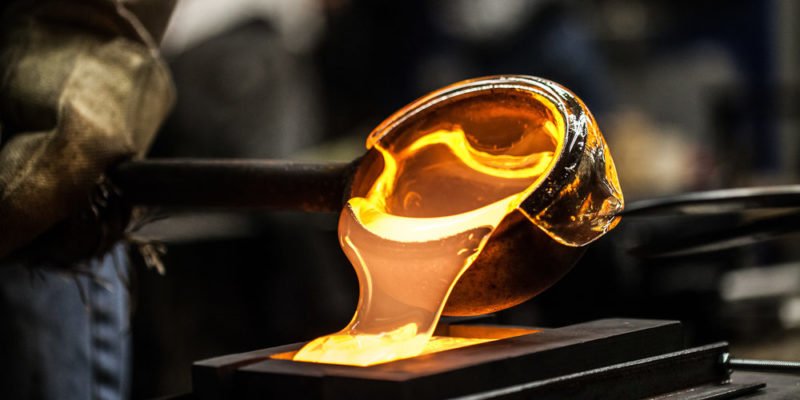We explain what glass is and what its main characteristics are. In addition, its various uses and properties.
What is glass?
Glass is a solid inorganic material that is hard and brittle at the same time, without a defined shape . It is formed with the melting at high temperatures of various mineral substances, such as carbonates or salts and varieties of sand, which are then rapidly cooled in a mold or manipulated with tools to shape it.
In other words, glass can be made from ordinary sand (which is mostly made up of silicon dioxide) in a liquid state . This state could not occur on a sandy beach because it needs to be exposed to an extremely high temperature to melt, starting at 1700º C.
The sand, after being melted and cooled, undergoes a transformation in its structure so it does not return to the previous state of a yellow clay substance, but instead becomes a solid and crystalline material without a determined shape.
The first traces of glass date from 2000 BC. C. in Egypt . The material was not proper glass nor was it transparent, but it did mimic gemstones. It was found in various jewelry and ornate ceramics .
Glass has been used since ancient times and is still an important element today that is used in various uses, such as household items, decoration, infrastructure, telecommunications, electronic devices, equipment for health studies, work machinery, among much others. In addition to the multiple uses, it has the advantage that it can be recycled re
Glass characteristics
Glass is characterized by being:
- A hard material , even when it is very thin.
- A brittle material in case of being hit lightly.
- A malleable material through different methods that allow a different finish to be achieved, such as tempered, annealed, thermo-acoustic, armored, laminated glass, among others.
- A material product of casting and cooling that can soften again when exposed to temperatures greater than 800ºC.
- A material that can be recycled repeatedly.
Uses of glass

In ancient times, glass was used as a replacement for precious stones to be applied to jewelry , ceramics and architectural ornamentation .
After perfecting the material smelting process, a transparent glass of better quality was obtained, which was given various formats. From there, it was used mainly in windows of temples and churches . Then it became popular and the types of use expanded.
At present, glass is used in most areas, such as decoration, accessories, construction, utensils for daily use, health, technology , automotive, among others.
Glass properties

Among the main properties of glass are:
- Optical qualities. They consist of the transmission of the visible spectrum of light that depends on the composition and purity of the glass. Those with the highest light transmission capacity are those free of iron compounds .
- Composition. It consists of the diversity of mineral components, such as sodium carbonate, limestone, silicon dioxide, aluminum oxide , which can be used and combined to melt them and create different types and qualities of glass.
- Color. It consists of certain components that are added at the time of fusion to obtain a different finish in the tonalization of the glass. For example, a bluish-red color can be achieved by adding cobalt oxide, a yellow color will be achieved by adding ferric oxide, and a bluish color will be achieved by adding ferrous oxide.
- Texture. It consists of the glass surface that can be perceived by sight or touch and the variants can be obtained depending on the melting process and certain components.
- Malleability. It consists of the molding methods that are carried out in the casting stage prior to cooling, depending on the use that the glass will have, such as a window or a bottle. The methods can be: pressing, blowing, spiraling and laminating, among others.
- Thermal qualities. They consist of the ability to conduct temperature, both heat and cold. The glass, once hardened, does not have a defined softening point, but ranges between 600º C and 700º C.
- Density. It consists of the amount of mass that the glass contains and that depends on the type of materials combined in the casting process. In general, the density of glass is around 2500 kg / m 3 .
- Corrosion. It consists of the ability to tolerate the wear that the glass has and that depends on its chemical composition. There are four main substances against which glass can break: hydrochloric acid, high-concentration phosphoric acid, alkaline concentrations at high temperatures, and water at high temperatures.
Luke is passionate about fostering student involvement and connection. He studied psychology for his major and likes learning about the past. Luke aims to specialize in artificial intelligence and cybersecurity. .
Leave a reply
Your email address will not be published. Required fields are marked *Recent post

Sport: What Is It, Types, Risks, Features, Characteristics and Examples

Dogs: Emergence, Features, Characteristics, Feeding and Breeds

Story: Definition, Elements, Structure, Features and Characteristics

